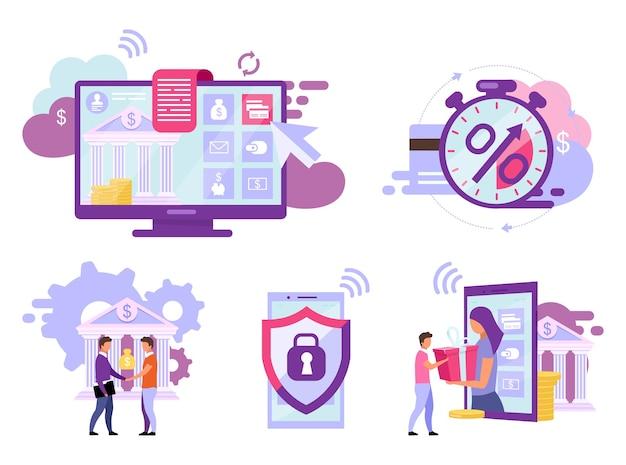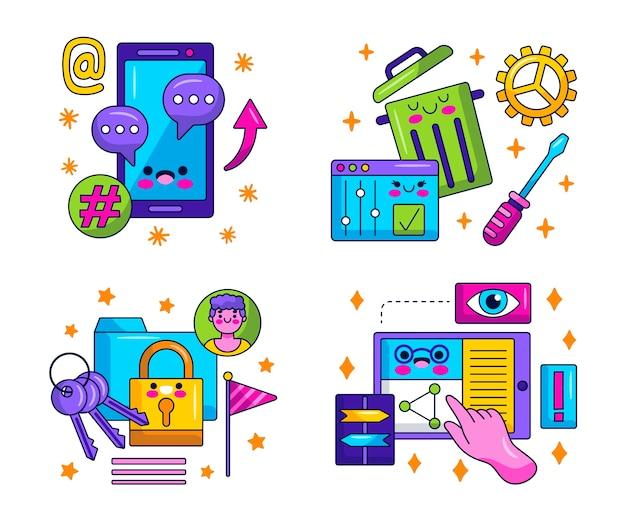In today’s fast-paced business environment, making payments quickly and efficiently is critical. For many decades, Automated Clearing House (ACH) has been the go-to payment method for businesses, allowing them to transfer funds between bank accounts electronically. However, with the rise of real-time payment (RTP) systems, businesses are starting to question if ACH is still the best option.
The main difference between ACH and real-time payments is the speed at which the transaction is processed. While ACH payments can take anywhere from one to three business days, real-time payments are processed within seconds, making them an attractive alternative for businesses that require instant transaction confirmations.
But is RTP really the future of payment methods? Could it replace ACH altogether? While RTP does have some clear advantages over ACH, such as faster processing times and instant confirmations, there are also some drawbacks to consider. For example, RTP is often more expensive than ACH, which may not make it a cost-effective option for smaller businesses.
So, what exactly is RTP, and how does it differ from ACH and other payment methods like wire transfers? In this blog post, we’ll take an in-depth look at real-time payments vs ACH, explore the pros and cons of each, and ultimately help you decide which payment method is best for your business. We’ll also answer commonly asked questions such as whether Zelle uses ACH or RTP and what the RTP payment method entails. So, let’s dive in and explore the world of real-time payments and ACH!
Real-Time Payments vs ACH: What’s the Difference
If you’re among those who still receive payment for services rendered in the form of a check, then it’s time to upgrade to real-time payments or ACH. While both payment methods are electronic, real-time payments and ACH are vastly different in terms of the time it takes to complete a transaction and the convenience they offer. In this section, we’ll take an in-depth look at the differences between real-time payments and ACH, and what options are available to you.
Real-Time Payments
Real-time payments, also known as instant payments, are electronic, real-time funds transfers between bank accounts that happen almost instantly, typically within a few seconds. This form of payment is ideal for individuals or businesses that need money transferred quickly and securely. It is also convenient for e-commerce transactions, bill payments, and peer-to-peer money transfers. Real-time payments are becoming increasingly popular with the introduction of several apps that facilitate instant money transfers.
ACH
ACH stands for Automated Clearing House, which is a system of the US Federal Reserve that enables electronic funds transfers between banks. Unlike real-time payments, ACH transactions typically take 2–3 business days to complete. However, ACH is best suited for recurring payments, such as direct deposits of paychecks, loan payments, and recurring online bill payments.
Which One Should You Choose
The decision to use real-time payments or ACH depends on the type of payment you need to make, its urgency, and how frequently you need to make it. If you need money transferred quickly and securely, real-time payments are the way to go. On the other hand, if you have recurring payments that need to be made over time, then ACH is better suited for your needs.
In conclusion, real-time payments and ACH have their advantages and disadvantages, so it’s essential to assess your needs before selecting the one that suits you best. Regardless of which option you choose, both real-time payments and ACH are electronic and offer a level of convenience and security that traditional paper checks cannot match.
Same Day ACH: Faster Processing for ACH Payments
If you’ve ever had to wait a few days for an ACH transaction to clear, you know how frustrating it can be. Same Day ACH is the solution to that problem. It’s a newer, faster way to process ACH payments that can happen within the same business day. Here’s what you need to know about it.
What is Same Day ACH
Same Day ACH is a new rule passed by NACHA (National Automated Clearing House Association) that allows for faster processing of ACH payments. Instead of taking several days for the transaction to clear, Same Day ACH transactions can take place on the same day. This is done by allowing for three settlement opportunities throughout the day instead of just one.
How Does Same Day ACH Work
To use Same Day ACH, both the sending and receiving banks need to be able to handle Same Day ACH transactions. If both parties are capable, the payment can be processed on the same day. If not, the transaction will proceed as a regular ACH and be processed in the traditional way.
What Are the Benefits of Same Day ACH
The biggest benefit of Same Day ACH is speed. This is extremely helpful for businesses and individuals that need to move money quickly. For example, payroll funds can be transferred quickly instead of having to wait a few days for the funds to clear. It also allows for more flexibility and control over cash flow since payments can be made and received on the same day.
Same Day ACH is a newer, faster way to process ACH transactions that allows for payments to be made and received on the same day. It offers numerous benefits for both businesses and individuals and is becoming increasingly popular. With the ability to transfer money quickly and efficiently, Same Day ACH is quickly becoming the preferred payment method for many.
ACH vs Wire vs RTP
When it comes to sending and receiving payments, there are multiple options available, each with its own advantages and disadvantages. In this section, we will compare ACH, wire transfers, and real-time payments (RTP).
ACH
ACH, or Automated Clearing House, is a popular method of payment that allows businesses and consumers to send and receive funds electronically. One of the biggest advantages of ACH is that it is a low-cost option, with fees that are typically lower than wire transfers or RTP.
However, one of the drawbacks of ACH is that it can take several business days for the funds to clear, which can be a disadvantage if you need the money to be available quickly. Additionally, ACH payments are typically limited to a certain amount per transaction.
Wire Transfers
Wire transfers are a popular option for sending large sums of money quickly and securely. One of the advantages of wire transfers is that they can be completed in a matter of hours, allowing the recipient to have access to the funds quickly.
However, wire transfers are typically more expensive than ACH or RTP, and there may also be additional fees involved, such as fees charged by intermediary banks. Additionally, wire transfers may not be suitable for smaller transactions, as the fees may be prohibitively high.
Real-Time Payments
Real-time payments (RTP) are a relatively new payment method that allows funds to be transferred instantly. This can be a significant advantage for businesses and consumers who need access to funds quickly, such as in the case of emergency expenses.
One of the other advantages of RTP is that they are typically low-cost, making them an attractive option for businesses and consumers who frequently need to send or receive payments. However, not all financial institutions offer RTP, and there may be certain limitations on the amount of money that can be transferred per transaction.
Overall, the choice between ACH, wire transfers, and RTP will depend on various factors, including the size of the transaction, the urgency of the payment, and the cost of the transaction. By understanding the advantages and disadvantages of each payment method, businesses and consumers can make informed decisions about which option is best for their needs.
Will RTP Replace ACH
Real-time payments (RTP) and ACH (Automated Clearing House) serve different purposes, but their end goal is the same, transferring money between accounts. Both these systems of money transfer have their pros and cons. However, one question arises: will RTP replace ACH in the future?
The Popularity of RTP
RTP has been gaining popularity over the years. RTP involves almost instantaneous transfers between banks, and the money is immediately available to the recipient. On the other hand, the ACH process takes a few days to complete. RTP is more secure because it uses encrypted messaging, and the payment is authorized immediately.
Ma ny Benefits of RTP Over ACH
RTP is the future of payments because of its speed, security, and convenience. RTP payments can be initiated at any time, unlike ACH, which is limited to business hours. Many businesses are switching to RTP because it has the potential to improve their cash flow. The processing fees for RTP payments are lower than ACH because the payment is processed in real-time, reducing the risk of fraudulent activity.
Why RTP Might Not Replace ACH
RTP is an excellent payment system, but it might not replace ACH entirely. ACH is a proven system, and many people trust it. ACH is also more widely available than RTP, which is currently only available in some parts of the world. Many small businesses still cannot afford to switch to RTP due to the cost of setting up the system and transaction fees.
In conclusion, RTP might replace ACH in the future, but it is not happening anytime soon. Both payment systems are here to stay, and it is up to the user to choose which system best suits their needs. RTP might be the future, but ACH is still a reliable, secure, and widely available payment system.
ACH vs. Real-Time Payments: What’s the Difference
As we all know, the world of payments is constantly evolving, with new technologies emerging every day. Two such technologies that are currently gaining traction are ACH and real-time payments.
What are ACH Payments
ACH stands for Automated Clearing House, a U.S. network that is used for processing electronic payments. ACH payments are electronic transactions that move money between bank accounts. They are commonly used for direct deposit of paychecks, bill payments, and other routine payments.
The Benefits of ACH Payments
One of the main benefits of ACH payments is their affordability. ACH transactions are cheaper than other types of electronic payments, including wire transfers and credit card payments. Additionally, ACH payments are often more secure than other types of electronic payments, as the ACH network is regulated by the Federal Reserve.
What are Real-Time Payments
Real-time payments, on the other hand, are transactions that happen instantly. They allow money to be transferred between financial institutions almost immediately, 24/7. These types of payments are often used for urgent and time-sensitive transactions like bill payments, payroll, and online purchases.
The Benefits of Real-Time Payments
The benefits of real-time payments are fairly obvious – they’re fast, efficient, and convenient. Unlike ACH payments, real-time payments are processed instantly, meaning money can be sent and received in real-time. Additionally, real-time payments can be initiated at any time of day or night, which can be especially beneficial for businesses operating globally.
In summary, ACH payments are more affordable and secure than other types of electronic payments, while real-time payments are fast, efficient, and convenient. Ultimately, the choice between ACH payments and real-time payments will depend on your specific needs and circumstances. However, it’s safe to say that both of these technologies represent significant advancements in the world of payments, and are likely to become even more important in the years to come.
Does Zelle use ACH or RTP
Zelle is a popular payment platform that enables users to transfer money instantly and securely. However, many people are still confused about whether Zelle uses ACH or RTP.
What is ACH
ACH stands for Automated Clearing House, which is an electronic network for financial transactions in the United States. ACH transfers are processed in batches and can take up to several business days to clear. ACH is commonly used for direct deposits, bill payments, and other recurring transfers.
What is RTP
RTP stands for Real-Time Payments, which is a newer and faster payment system that enables instant money transfers between accounts in the United States. RTP transfers are processed in real-time and can be completed within seconds, even on weekends and holidays.
Does Zelle use ACH or RTP
Zelle uses both ACH and RTP to facilitate money transfers. In most cases, small transfers made through Zelle are processed through the RTP system and can be completed instantly. However, larger transfers may be processed through the ACH system and may take up to several business days to clear.
It’s important to note that the type of transfer used by Zelle depends on several factors, including the amount being transferred, the banks involved, and other factors. If you need to transfer money instantly, it’s best to check with your bank to see if they support RTP transfers.
In conclusion, Zelle uses both ACH and RTP to facilitate money transfers, and the type of transfer used depends on several factors. Understanding these differences can help you make informed decisions when using Zelle to transfer money.
Is RTP more expensive than ACH
Real Time Payments (RTP) and the Automated Clearing House (ACH) are two popular methods of making electronic payments. Although they share some similarities, they differ in terms of speed, security, and cost.
Understanding RTP and ACH
Before we dive into the cost, let’s take a quick look at what RTP and ACH are. RTP is a newer payment system that enables real-time financial transfers between bank accounts. In contrast, ACH is a more traditional system for processing large volumes of payments, but it takes up to several days to settle.
RTP vs. ACH Cost
One of the most commonly asked questions about RTP and ACH is which one is more expensive. The answer is not straightforward, and it boils down to several factors such as the amount and frequency of the payments, and the specific needs of the user.
However, RTP tends to be more expensive than ACH because it offers faster settlement and supports a more extensive range of services such as request for payment, payment tracking, and messaging capability. These features come at a premium cost.
Factors that Influence RTP & ACH Pricing
Both RTP and ACH providers charge different fees depending on various factors. For instance, ACH pricing is usually based on the volume of transactions, while RTP charges based on the type of service and the volume of transactions.
Other factors that influence RTP and ACH pricing include the size of the payment, the frequency of the transactions, and the timing of the transfers. Some providers may also charge additional fees for value-added services such as analytics and reporting functions.
Choosing the Right Payment Method
When choosing between RTP and ACH, the cost is just one of the many factors to consider. It’s vital to evaluate other aspects such as speed, security, and convenience to determine which payment method better suits your needs.
In conclusion, RTP and ACH have different cost structures, and the pricing depends on various factors. However, RTP tends to be more expensive than ACH because of its advanced features and faster settlement times. Ultimately, the choice between RTP and ACH should be based on factors beyond the price, such as your specific business needs and the purpose of the transaction.
What is the RTP Payment Method
The RTP payment method is a fast and secure way to transfer money between bank accounts in real-time. Unlike traditional payment methods that can take several business days to complete, RTP payments are instantaneous. RTP stands for Real-time Payments, and it’s a modern payment method designed to meet the increasing demand for faster and more efficient payment processing.
How does the RTP payment method work
When you initiate an RTP payment, the funds are immediately credited to the recipient’s account, and a notification is usually sent to both parties involved. You can initiate an RTP payment through your bank’s mobile or online banking portal by selecting RTP as the payment option. You will need to provide the recipient’s bank account details, such as the name and account number, to complete the payment.
What are the advantages of RTP payments
RTP payments offer several advantages over traditional payment methods. One of the main benefits is the speed of the transaction. Unlike ACH payments (which can take up to 3 days to clear), RTP payments are typically settled within seconds. Another benefit of RTP payments is the increased security. They use advanced encryption and authentication technologies to protect your information during the transaction.
Who can use the RTP payment method
To use the RTP payment method, you need to have a bank account that supports the RTP network. Many banks in the United States have already adopted the RTP network, and more are expected to do so in the future.
The RTP payment method is a fast and secure way to transfer money between bank accounts in real-time. Its benefits include speed, security, and convenience. While not every bank currently supports the RTP network, it’s expected to become more widely available in the future. If you’re looking for a payment method that’s fast, secure, and efficient, RTP payments may be just what you need.



